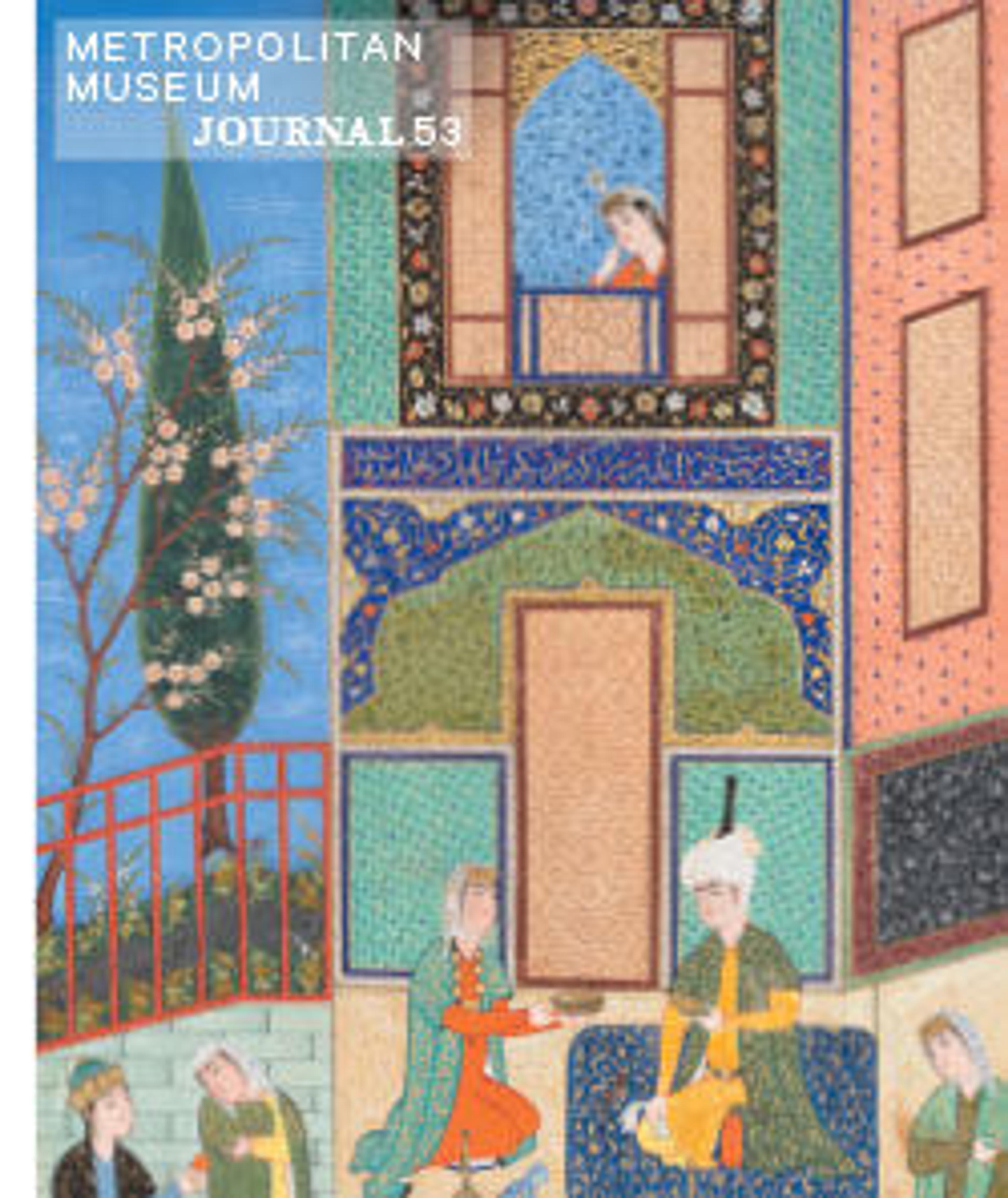"Marriage of Khusrau and Shirin", Folio 104 from a Khamsa (Quintet) of Nizami of Ganja
The second poem of Nizami’s Khamsa (Quintet) is a romantic epic tale concerning the last great Sasanian ruler, Khusrau II, and his beloved Armenian princess, Shirin. While their union is delayed by many trials, tribulations, and intervening marriages, eventually the two are happily wed. This painting depicts their marriage, set within a crystalline architectural composition. Great care is lavished upon the details of the building, suggesting that the artist may have intended to depict a specific structure. Over the heads of the couple appears an invocation to God—"Oh! Opener of Doors!" The inscription on the portico above, dated Rajab 913 (April–May 1525), is contemporaneous with the colophon of the manuscript.
Artwork Details
- Title: "Marriage of Khusrau and Shirin", Folio 104 from a Khamsa (Quintet) of Nizami of Ganja
- Author: Nizami (present-day Azerbaijan, Ganja 1141–1209 Ganja)
- Calligrapher: Sultan Muhammad Nur (Iranian, ca. 1472–ca. 1536)
- Calligrapher: Mahmud Muzahib (Iranian, ca. 1500–1560)
- Artist: Painting by Shaikh Zada (Iranian, active 1510–1550)
- Date: dated 931 AH/1524–25 CE
- Geography: Made in present-day Afghanistan, Herat
- Medium: Ink, opaque watercolor, and gold on paper
- Dimensions: Painting: H. 7 in. (17.8 cm)
W. 4 3/4 in. (12.1 cm)
Page: H. 12 5/8 in. (32.1 cm)
W. 8 3/4 in. (22.2 cm)
Mat: H. 19 1/4 in. (48.9 cm)
W. 14 1/4 in. (36.2 cm) - Classification: Codices
- Credit Line: Gift of Alexander Smith Cochran, 1913
- Object Number: 13.228.7.6
- Curatorial Department: Islamic Art
More Artwork
Research Resources
The Met provides unparalleled resources for research and welcomes an international community of students and scholars. The Met's Open Access API is where creators and researchers can connect to the The Met collection. Open Access data and public domain images are available for unrestricted commercial and noncommercial use without permission or fee.
To request images under copyright and other restrictions, please use this Image Request form.
Feedback
We continue to research and examine historical and cultural context for objects in The Met collection. If you have comments or questions about this object record, please contact us using the form below. The Museum looks forward to receiving your comments.
